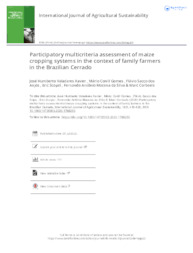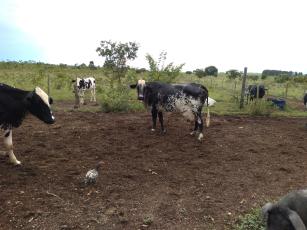Participatory multicriteria assessment of maize cropping systems in the context of family farmers in the Brazilian Cerrado.
Participatory multicriteria assessment of maize cropping systems in the context of family farmers in the Brazilian Cerrado.
Summary: Conservation agriculture (CA) is recognized as a promising crop management strategy for sustainable agricultural intensification. The objective of this study was to evaluate CA cropping systems for rainfed maize as an alternative to the traditional tillage-based cropping systems (CT) in the context of family farms, using a multi-criteria model that represents the point of view of farmers. Farmers considered several aspects for evaluating the cropping systems, thatwere systematized in the model through five criteria (with sub-criteria): (a) costs; (b) yield; (c) labour; (d) human health and environment; and (e) production risks. CA did not differ from CT for the ?costs? criterion but was superior for the ?yield? and ?labour? criteria. In contrast, CT obtained better ratings for the criteria ?human health and environment? and ?production risks?. Considering all criteria, CA was better appraised than CT. However, a new local policy measure that subsidizes the hiring of mechanized tillage services overturns this outcome, indicating the importance of exogenous factors. Overall, the participatory processes in building the model allowed us to better understand the reasons of adoption or non-adoption of CA by small-scale farmers in the tropics.
Publication year: 2020
Types of publication: Journal article
Unit: Embrapa Cerrados
Observation
Some of Embrapa's publications are published as ePub files. To read them, use or download one of the following free software options to your computer or mobile device. Android: Google Play Books; IOS: iBooks; Windows and Linux: Calibre.
Access other publications
Access the Agricultural Research Database (BDPA) to consult Embrapa's full library collection and records.
Visit Embrapa Bookstore to purchase books and other publications sold by Embrapa.


